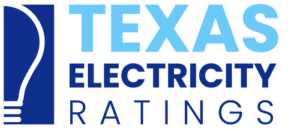The deregulated Texas Electricity market receives a lot of criticism from the people who live here. However, ironically, it is universally praised and used as a model by every other state that is moving to deregulation. And in an awesome article in today’s Fort Worth Star-Telegram, author Mitchell Schnurman takes a look at why Texas deregulated electricity is considered such a home run by the other 13 deregulated states. The entire article is worth a read, but I wanted to break down some of the most interesting items here on the blog.
Adjusting the ’01 price for inflation, today’s rate is 31 percent lower in North Texas, he reported. One more metric: Since December 2001, rates in the regulated sector — municipal utilities, cooperatives and investor-owned utilities — often climbed by double-digit percentages. But prices offered by competitive retailers dropped by 26 to 43 percent.
Here’s the first item I wanted to take a look at, and the reason should be obvious. One of the most consistent and common gripes I hear from people is how prices have gone up since Texas deregulated. This manifests in people, lots of people, complaining about how deregulation was all a ruse to gouge prices and make profits at the expense of Texans. Well, that’s absolutely not true. Yes, we had some years with exorbitantly high prices, but prices would have been high no matter what, because they’re based on natural gas rates. The rest of the country had high rates that year as well. Per the quote above, prices are 31% lower in the deregulated areas than they were before deregulation in 2001. And the areas that remained regulated are actually higher than they were in ’01, while the competitive areas dropped between 26-43%!
Still, the state’s success also depends on competition among retailers and generators, and the design of the state’s deregulation scheme. That’s spurred more wind generation, making Texas easily the largest producer of wind power in the country and fifth-largest in the world.
I actually don’t have much to elaborate on this point, but I definitely wanted to single it out for posterity. When deregulation was set in motion, the idea was that the companies themselves would be forced to work more efficiently to reduce the bottom line for customers in an effort to remain competitive with the other providers. And that is largely what has happened. And in the process, Texas has also become the fifth largest generator of wind power in the world. So a side effect to innovation and market efficiency is remarkable grown in Green Energy.
To gauge the competitiveness of a market, analysts often focus on the number of customers that switch providers. In North Texas, about half the residential base has left TXU Energy, the affiliate of the incumbent monopoly, and statewide, the total switch from the previous incumbent is about 56 percent.
In Pennsylvania, over roughly the same period, 19 percent of residents have switched, and in some areas, it’s less than 5 percent, Hudson said.
Many Texas customers shop aggressively and stay with their provider because they get good terms. TXU estimates that 87 percent of residents in North Texas have changed either their provider or their electricity plan, and that’s a better gauge of competition in practice.
Well, this quote certainly is a site for sore eyes. It’s also interesting because the number one thing I consistently see in the market for Texas electricity is that a lot of people still don’t seem to understand how the market works at all. Many aren’t even aware of choice. However, according to this metric, it seems that half of Texas actively shops and takes advantage of the Texas Electricity deregulated market. That’s fantastic news. Now if I can just get the other half to pay attention, we’ll be doing great.
Also of interest in that quote is how many people have left TXU.
Since 1999, hundreds of power plants have been built in the deregulated electric market, adding 45,000 megawatts of generation to the grid controlled by the Electric Reliability Council of Texas. Peak demand in ERCOT, set last August, was 65,776 megawatts.
Interesting. So our market and our demand is growing substantially bigger, while our prices continue to drop. That is the definition of positive grown, in my opinion.
I strongly urge everyone to read the entire article in the Star-Telegram. It really is a great read, and it touches on a number of fascinating things in regards to how the market works in Pennsylvania, how the two states compare, as well as some other items that can keep markets like Texas low. And those were quotes and topics I didn’t even highlight here for examination.
